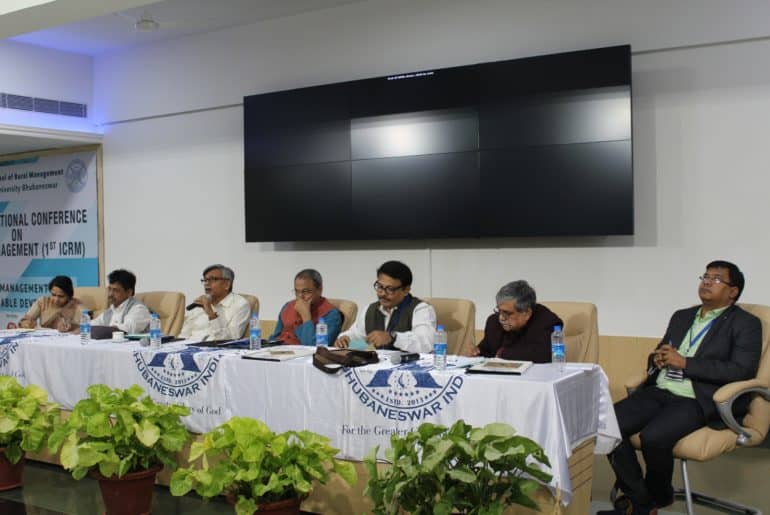As 2.3 lakh students appeared for the gruelling CAT exam today, we trace the history of its incongruous nature, the criticisms and controversies that surround it, and problems that plague the future of this highly competitive exam.
Common Admission Test, more fondly referred to as CAT, is an all-India standardised test that was started by the Indian Institute of Management(s) as a means of selecting students for their post-graduate programs in business administration. The exam tests students on the bases of Quantitative Ability, Data Interpretation and Logical reasoning, and Verbal Ability and Reading Comprehension. Presently, CAT is famous for its notoriety, the difficulties it poses, its nerve-wracking competitiveness, and the ever-changing guidelines. Since the past 10 years, the number of test takers has hovered around the 1.85 lakh student average, and in 2016 it was the highest in the past seven years, with more than 2 lakh students appearing for it. What are the problems that plague this system, and why is the diversity in all the top business schools so skewed and seemingly less favourable for particular sections?
The changes in admission criteria over the past years
IIMs routinely change their admission criteria to enroll students from diverse backgrounds. IIM- Bangalore now awards higher weightage to work experience, while most IIMs are awarding extra marks to female students. The weightage given to CAT has fallen drastically over the past years, with only FMS remaining in the top b-schools category that gives more than 80% weightage to it. Other top schools take into account a hoard of additional factors like work experience, marks scored in 10th, 12th, graduation, and performance in group discussions and personal interviews. These steps give the illusion that the IIMs are diversifying, but the prospective chances for female and non-engineers remain unflinchingly low.
Following years of criticism of employing measures that significantly increased the probability of enrolling students from the engineering background, the CAT exam pattern saw major upheavals in 2015. Descriptive, type-in-the-box questions were introduced reducing the total number of MCQs, and the time limit to answer 100 questions was raised from 170 to 180. In effect, it clearly failed to make a difference as all 20 candidates who scored 100 percentiles in 2016 were males from the engineering background. Females and non-engineers did score 100 percentile in sectionals, but the overall CAT result was the same as any year’s.
A number of deserving candidates, both male and female, are also losing out due to poor scores in high school and graduation. The purpose of considering previous milestone marks is to determine a student’s worth via his/her consistent performance over the years, but it fails to account for the degrading standards of education and extreme emphasis on rote learning in schools. It is an undeniable fact that marks secured up till 12th are primarily based on one’s ability to memorise, and the access one has to expensive tutors.
The not so “common” aftermath of CAT
The 20 IIMs, along with scores of other Institutes take into account an individual’s CAT percentile. However, many famous private institutions like ISB, S.P Jain, Xavier’s, Narsee Monjee, IIFT, have their personalised admission tests or they consider GMAT scores. CAT was devised by the IIMs, and it continues to be the top criterion for admission in the reputed franchisee. When a person does convert a call to enter IIM Ahmedabad, Bangalore, or Calcutta, the fees at these institutions is 20+ lakhs, inclusive of tuition and hostel fees. Most fresh graduates have to resort to taking education loans, which is extremely easy to procure if one is associated with the IIM brand, to pay the debt of studying in these coveted institutes. However, the falling annual average packages offered during campus placements are posing questions regarding the Return of Investment (RoI) of IIMs. The fact that newer IIMs, like IIM Sambhalpur and IIM Bodh Gaya, witnessed students who weren’t offered any job, in the history of IIMs has dented the prestige and sense of job security that was affiliated with IIMs.
India’s unfathomable obsession with IIMs
Presumably and justifiably so, the graduates of these institutions are the best brains of the country. The question needs to be asked- what about those who don’t belong to this list? At the cost of remaining elusive to the average student who can’t afford coaching, the average student who can’t join through management quotas in a reputed institute; this average student faces several entry barriers. Despite all efforts being infused into the system to minimise these initial hurdles, there is a long way to go before the top institutes oversee discussions from every discipline and all genders.
Feature Image Credits: Campus Drift
Vijeata Balani
[email protected]















